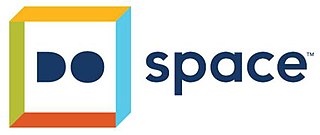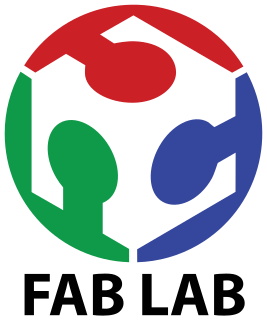 W
W3D printing, or additive manufacturing, is the construction of a three-dimensional object from a CAD model or a digital 3D model. The term "3D printing" can refer to a variety of processes in which material is deposited, joined or solidified under computer control to create a three-dimensional object, with material being added together, typically layer by layer.
 W
W3D printing filament is the thermoplastic feedstock for fused deposition modeling 3D printers. There are many types of filament available with different properties, requiring different temperatures to print. Filament is commonly available in the two standard diameters of 1.75 mm and 2.85 mm. 2.85 mm filament is sometimes erronously referred to as "3 mm", but should not be confused with the less common filament size that actually measures 3 mm in diameter.
 W
WA 3D selfie is a 3D-printed scale replica of a person or their face. These three-dimensional selfies are also known as 3D portraits, 3D figurines, 3D-printed figurines, mini-me figurines and miniature statues. In 2014 a first 3D printed bust of a President, Barack Obama, was made. 3D-digital-imaging specialists used handheld 3D scanners to create an accurate representation of the President.
 W
WThe 3DBenchy is a 3D computer model specifically designed for testing the accuracy and capabilities of 3D printers. The 3DBenchy is described by its creator, Creative Tools, as "the jolly 3D printing torture-test" and was released in April 2015, with a multi-part, multi-color model released in July 2015. Due to its status as a common benchmark, it is believed to be the world's most 3D printed object.
 W
WThe 3Doodler is a 3D pen developed by Peter Dilworth, Maxwell Bogue and Daniel Cowen of WobbleWorks, Inc.. The 3Doodler works by extruding heated plastic that cools almost instantly into a solid, stable structure, allowing for the free-hand creation of three-dimensional objects. It utilizes plastic thread made of either acrylonitrile butadiene styrene ("ABS"), polylactic acid ("PLA"), or “FLEXY”, thermal polyurethane (“TPU”) that is melted and then cooled through a patented process while moving through the pen, which can then be used to make 3D objects by hand. The 3Doodler has been described as a glue gun for 3D printing because of how the plastic is extruded from the tip, with one foot of the plastic thread equaling "about 11 feet of extruded material".
 W
WThe Airbus THOR is an unmanned aerial vehicle (UAV) by Airbus partially produced through the process of 3D printing. It is possibly the world's second 3D printed aircraft, flying four years after the world's first in 2011, Sulsa. Presented for the first time at the 2016 Berlin Air Show, except the electrical engine parts, the drone-like model is entirely made by 3D printing from polyamide. Although still in beta phase, aircraft like THOR are intended to make flights more economical and safer.
 W
WA Cartesian coordinate robot is an industrial robot whose three principal axes of control are linear and are at right angles to each other. The three sliding joints correspond to moving the wrist up-down, in-out, back-forth. Among other advantages, this mechanical arrangement simplifies the Robot control arm solution. It has high reliability and precision when operating in three-dimensional space. As a robot coordinate system, it is also effective for horizontal travel and for stacking bins.
 W
WCura is an open source slicing application for 3D printers. It was created by David Braam who was later employed by Ultimaker, a 3D printer manufacturing company, to maintain the software. Cura is available under LGPLv3 license. Cura was initially released under the open source Affero General Public License version 3, but on 28 September 2017 the license was changed to LGPLv3. This change allowed for more integration with third-party CAD applications. Development is hosted on GitHub. Ultimaker Cura is used by over one million users worldwide and handles 1.4 million print jobs per week. It is the preferred 3D printing software for Ultimaker 3D printers, but it can be used with other printers as well.
 W
WDefense Distributed is an online open-source hardware organization that develops digital schematics of firearms in CAD files, or "wiki weapons", that may be downloaded from the Internet and used in 3D printing or CNC milling applications. Among the organization's goals is to develop and freely publish firearms-related design schematics that can be downloaded and reproduced by anyone with a 3D printer or milling machine, facilitating the popular production of ghost guns.
 W
WIn design for additive manufacturing (DFAM), there are both broad themes and optimizations specific to a particular AM process. Described here is DFM analysis for stereolithography, in which design for manufacturability (DFM) considerations are applied in designing a part to be manufactured by the stereolithography (SLA) process. In SLA, parts are built from a photocurable liquid resin that cures when exposed to a laser beam that scans across the surface of the resin (photopolymerization). Resins containing acrylate, epoxy, and urethane are typically used. Complex parts and assemblies can be directly made in one go, to a greater extent than in earlier forms of manufacturing such as casting, forming, metal fabrication, and machining. Realization of such a seamless process requires the designer to take in considerations of manufacturability of the part by the process. In any product design process, DFM considerations are important to reduce iterations, time and material wastage.
 W
WDo Space is a 501(c)(3) non-profit community center for technology, digital library, education, and small makerspace featuring 3D printing technology in Omaha, Nebraska.
 W
WReleased in 2006, The Fab@Home was the first multi-material 3D printer available to the public, and one of the first two open-source DIY 3D printers in the world, at a time when all other additive manufacturing machines were still proprietary. The Fab@Home and the RepRap are credited with sparking the consumer 3D Printing revolution.
 W
WA fab lab is a small-scale workshop offering (personal) digital fabrication.
 W
WFarmBot is an open source precision agriculture CNC farming project consisting of a Cartesian coordinate robot farming machine, software and documentation including a farming data repository. The project aims to "Create an open and accessible technology aiding everyone to grow food and to grow food for everyone." FarmBot is an open source project allowing hardware, software and documentation modifications and additions from users.
 W
WFused filament fabrication (FFF), also known under the trademarked term fused deposition modeling (FDM), sometimes also called filament freeform fabrication, is a 3D printing process that uses a continuous filament of a thermoplastic material. Filament is fed from a large spool through a moving, heated printer extruder head, and is deposited on the growing work. The print head is moved under computer control to define the printed shape. Usually the head moves in two dimensions to deposit one horizontal plane, or layer, at a time; the work or the print head is then moved vertically by a small amount to begin a new layer. The speed of the extruder head may also be controlled to stop and start deposition and form an interrupted plane without stringing or dribbling between sections. "Fused filament fabrication" was coined by the members of the RepRap project to give a phrase that would be legally unconstrained in its use, given trademarks covering "fused deposition modeling".
 W
WMaterialise NV, headquartered in Leuven, Belgium, is one of the largest and most long-established independent companies in the 3D printing / additive manufacturing sector.
 W
W3D printing has changed the way of design complex structures which cannot be realized by traditional processing methods. The use of microstructures, where the thickness of each strut scale of tens of microns ranges from 0.2mm to 0.5mm, has a benefit to change the physical properties of objects (metamaterials) such as: elasticity, resistance, hardness., making them lighter or flexible. The pattern has to respond on geometry constraint, thickness constraint, or can be enforced using optimization methods(microstructure shape and topological optimization).
 W
WMink is a 3D printing company based in New York. The company created a 3D printer allows users to select any color and print it into an eye shadow pod.
 W
WOrgan printing utilizes techniques similar to conventional 3D printing where a computer model is fed into a printer that lays down successive layers of plastics or wax until a 3D object is produced. In the case of organ printing, the material being used by the printer is a biocompatible plastic. The biocompatible plastic forms a scaffold that acts as the skeleton for the organ that is being printed. As the plastic is being laid down, it is also seeded with human cells from the patient the organ is being printed for. After printing, the organ is transferred to an incubation chamber to give the cells time to grow. After a sufficient amount of time, the organ is implanted into the patient.
 W
WThe Polar Cloud is an American software platform for 3D printers and is owned and operated by Polar3D, LLC. The platform was launched in March 2017 and is now home to over 500,000 users in 160 countries. The platform is home to several programs and initiatives, including the Boys & Girls Club of America, GE Additive's Additive Education Program, and a recent COVID-19 Mask Making effort.
 W
WPrint the Legend is a 2014 documentary film and Netflix Original focused on the 3D printing revolution. It delves into the growth of the 3D printing industry, with focus on startup companies MakerBot and Formlabs, established companies Stratasys, PrintForm and 3D Systems, and figures of controversy in the industry such as Cody Wilson.
 W
WThe Prusa i3 series is an open-source fused deposition modeling 3D printer, manufactured by Czech company Prusa Research. Part of the RepRap project, it is the most used desktop 3D printer for parts ordered through the 3D Hubs fee-for-service business, and in 2016 it was the most used 3D printer in the world. The Prusa i3 was designed by Josef Průša in 2012 with the Prusa i3 MK2 being released in 2016 and the MK2S being released in 2017. The Prusa i3 MK3 was released in September 2017 with significant improvements over the prior models. A subsequent model with additional refinements to the extruder body and filament sensor was released in February 2019 as the Prusa i3 MK3S. The Prusa i3's comparable low cost and ease of construction and modification has made it popular in education and with hobbyists and professionals. Due to the printer being open source there have been many variants produced by companies and individuals worldwide, and like many other RepRap printers the Prusa i3 is capable of printing some of its own parts.
 W
WRapid prototyping is a group of techniques used to quickly fabricate a scale model of a physical part or assembly using three-dimensional computer aided design (CAD) data. Construction of the part or assembly is usually done using 3D printing or "additive layer manufacturing" technology.
 W
WSlic3r is free software 3D slicing engine for 3D printers. It generates G-code from 3D CAD files. Once finished, an appropriate G-code file for the production of the 3D modeled part or object is sent to the 3D printer for the manufacturing of a physical object. As of 2013, about half of the 3D printers tested by Make Magazine supported Slic3r.
 W
WJohn von Neumann's universal constructor is a self-replicating machine in a cellular automata (CA) environment. It was designed in the 1940s, without the use of a computer. The fundamental details of the machine were published in von Neumann's book Theory of Self-Reproducing Automata, completed in 1966 by Arthur W. Burks after von Neumann's death. While typically not as well known as von Neumann's other work, it is regarded as foundational for automata theory, complex systems, and artificial life. Indeed, Nobel Laureate Sydney Brenner considered Von Neumann's work on self-reproducing automata central to biological theory as well, allowing us to "discipline our thoughts about machines, both natural and artificial."